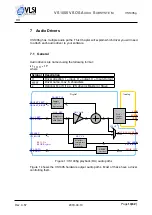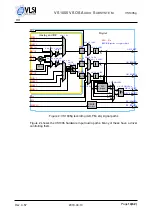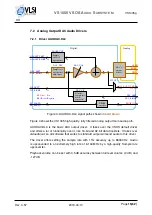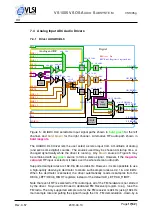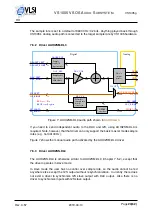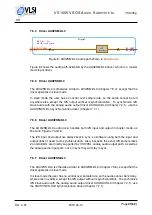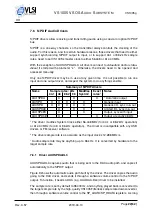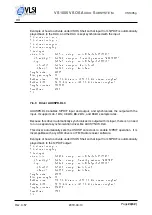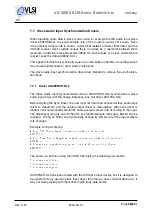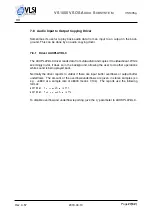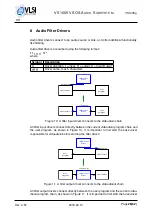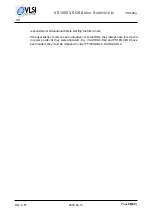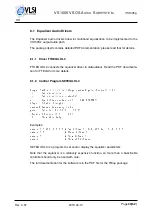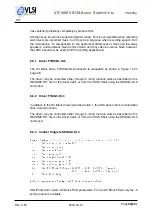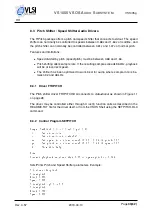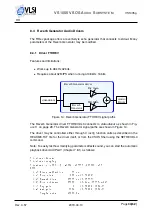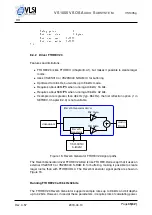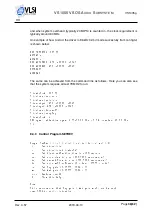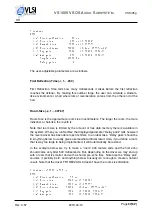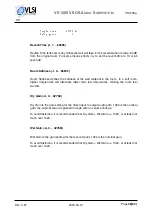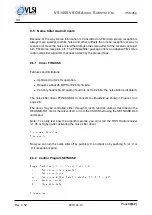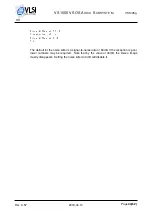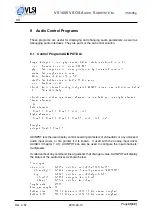
HH
VS1005 VSOS A
UDIO
S
UBSYSTEM
VS1005g
7.7
Slave Audio Input Synchronization Drivers
When inputting audio data in slave mode (using for example the I2S audio input slave
driver AUII2SS.DL3), the exact sample rate of the audio is usually not known. Even
if the nominal sample rate is known, mismatches between master transmitter and the
VS1005 receiver clock crystals causes there to always be a mismatch between them
(example: transmitter nominally sends 48000 Hz, but because of a clock mismatch the
receiver sees the data at 48002.3 Hz).
This speed mismatch will eventually cause an audio buffer underflow or overflow, which
may cause audible clicks or other kinds of distortion.
The slave audio input synchronization drivers are intended to remove the synchroniza-
tion issue.
7.7.1
Driver AUXSYNCS.DL3
The Slave Audio Input Synchronization Driver AUXSYNCS.DL3 synchronizes a slave
audio input driver with the analog Earphone/Line Out driver AUODAC.DL3.
Before starting the Sync Driver, the user must first load and connect a slave audio input
driver to
stdaudioin
, and the analog output driver to
stdaudioout
. When the driver is
loaded, it will automatically adjust the analog output sample rate according to the input.
The adjustment range is up to 97500 Hz, so standard sample rates up to 96 kHz can be
received. The Sync Driver can dynamically change its sample rate if the input sample
rate changes.
Example config.txt file clip:
# Load I2S Slave Input driver and make it stdaudioin
AUII2SS s
# Load Line Out / Earphone output driver and make it stdaudioout
AUODAC s
# Connect and synchronize stdaudioout with stdaudioin slave
AUXSYNCS
The same can be done using the VSOS Shell using the following commands:
S:>auii2ss s
S:>auodac s
S:>auxsyncs
AUXSYNCS.DL3 has been tested with the I2S Slave Input drivers, but it is designed to
be usable with any generic slave input driver that offers a near-constant data rate. It
may not work properly with input drivers with large data bursts.
Rev. 3.57
2019-04-10
Page


